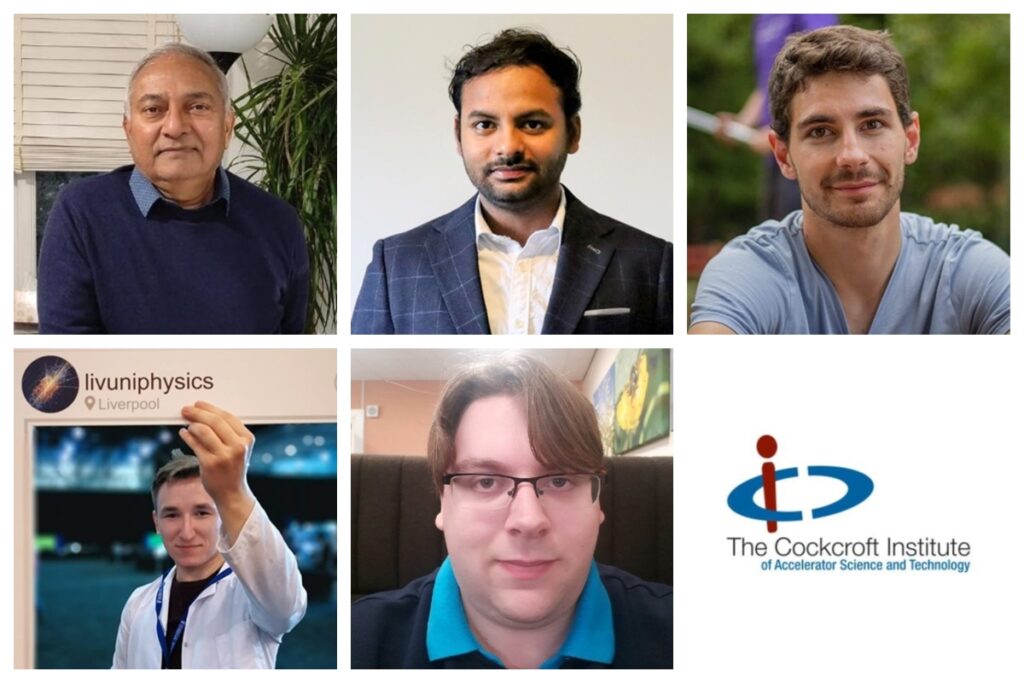In recent months, several PhD students affiliated with the Cockcroft Institute have successfully concluded their theses, marking a significant progression in their research journeys.

Dr Volodymir Rodin, and Dr Liam Soomary.
Dr Shivaji Pande passed his PhD viva in September with minor corrections. Shivaji was a part-time PhD student with Lancaster University, as his main job is working on the Diamond RF system. He has been balancing writing a PhD thesis while working full time. His PhD thesis, supervised by Graeme Burt, was titled “Study of vacuum trips in Diamond Light Source SRF cavities” and is a study of a new class of breakdown in SRF cavities that have been a frequent occurrence in the DLS. The thesis was examined by Rongli Geng, who is the new head of SRF at Jlab, and Rob Apsimon and the viva was chaired by Allan Rennie.
University of Liverpool / QUASAR Group member Dr Gyanendra Yadav successfully defended his thesis in October. Gyanendra studied dielectric laser acceleration of relativistic beams and worked with colleagues from the Cockcroft Institute and PSI. The aim of his PhD was to extend DLA modelling and optimisation to high scientific impact experimental demonstrations and develop structures for experimental demonstration of acceleration and deflection at both the Paul Scherer Institute and CLARA at Daresbury. Gyanendra is currently designing advanced optical systems for Augmented Reality, working as an Optical Engineer in Cambridge, U.K. His future plans are to stay in the research side of the light-matter interactions.
Another member of the QUASAR group, Dr Felix Soubelet gained his PhD in October. Felix’s PhD looked at developing the optics for the high luminosity upgrade of the LHC. The beam parameters in HL-LHC need to be much more tightly controlled than in the original LHC so highly accurate modelling of the machine is required to optimise these parameters. Tools which automatically build models of the machine were used to aid this development work. Measurements of beam parameters in the LHC were taken then these were fed back in to the model to improve it further still. This process was continued until the required beam parameters were achieved in the model of HL-LHC. Since completing his PhD Felix has accepted a fellowship at CERN where he will continue to do the things he loves including maths, physics, software developments and machine experiments.
Dr Volodymir Rodin was a fellow of the AVA Initial Training Network on antimatter research at the University of Liverpool and passed his PhD viva in November. Volodymyr studied “Low-energy beam preparation for the next generation antimatter experiments” and this led to several articles including a PRL, and application of his results to a number of experiments. Since graduation, he has started a CERN Fellowship and continues to work with us on several projects. He was assessed by Joseph Louis-Brian Beaudoin (Maryland), Oliver Boine-Frankenheim (GSI) and Robert Page.
Finally, Dr Liam Soomary from the University of Liverpool also earned his PhD in November. Liam investigated “The Development and Performance Characterisation of High-Brightness Photocathode Electron Sources for Particle Accelerators”, working closely with ASTeC colleagues and focusing on studies at TESS. Since graduation, he has started a role with Kratos. He was assessed by Jared Maxson (Cornell) and Vin Dhanak.
Congratulations to them all!
